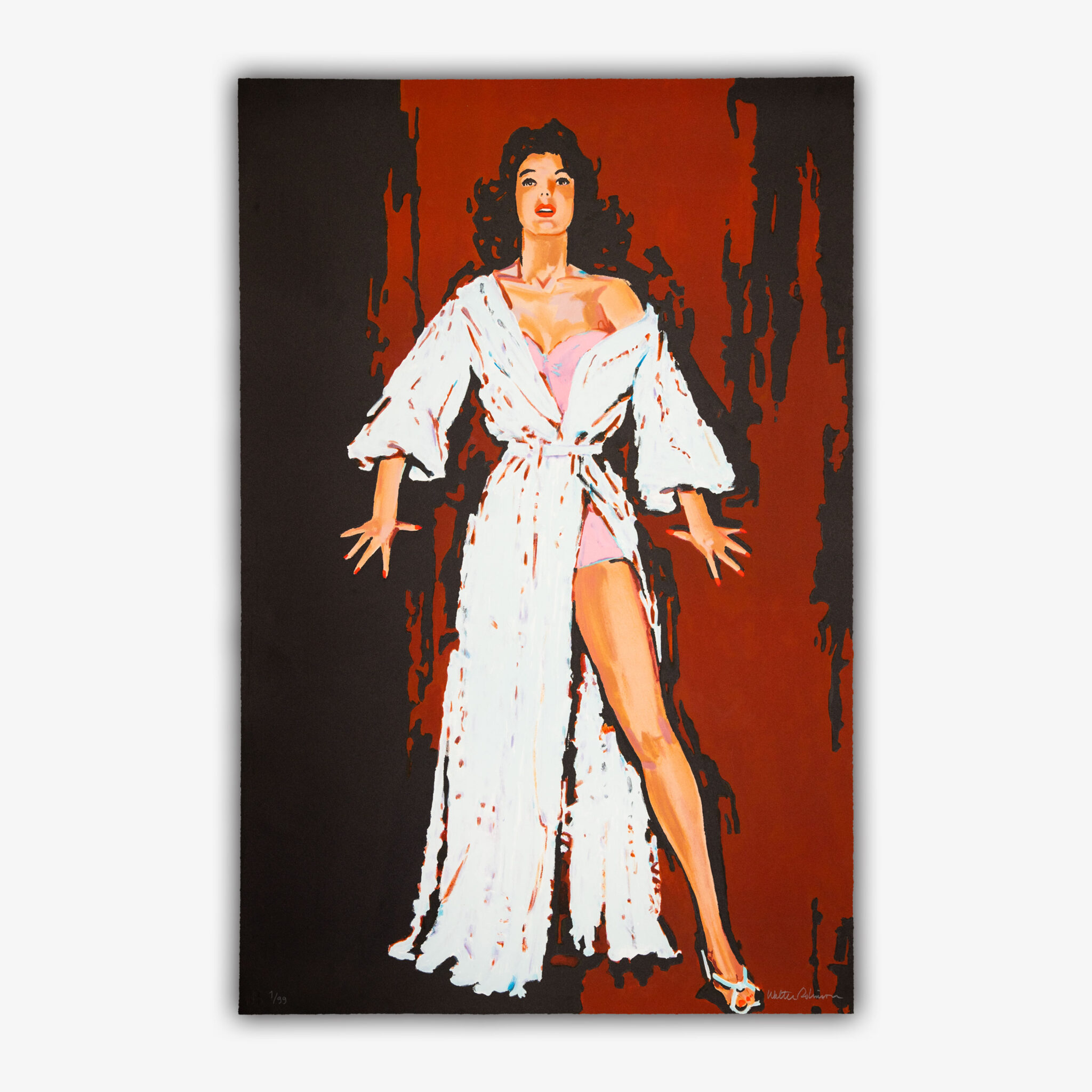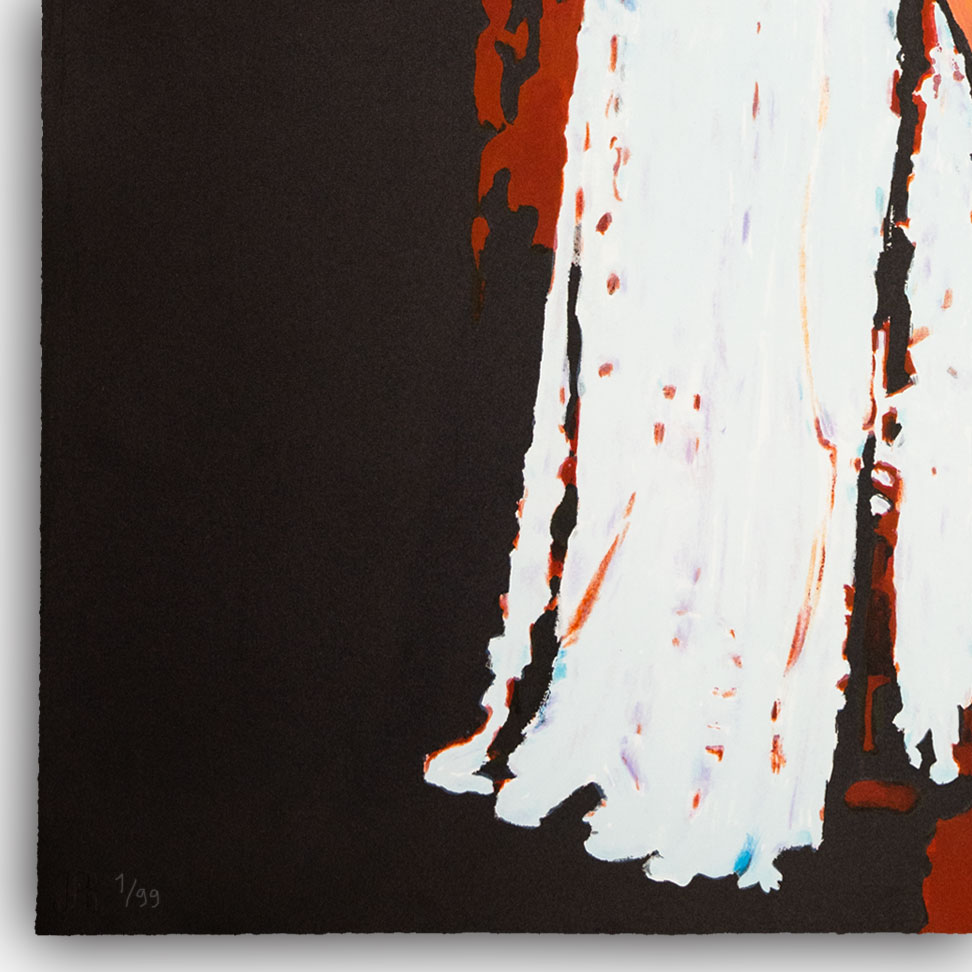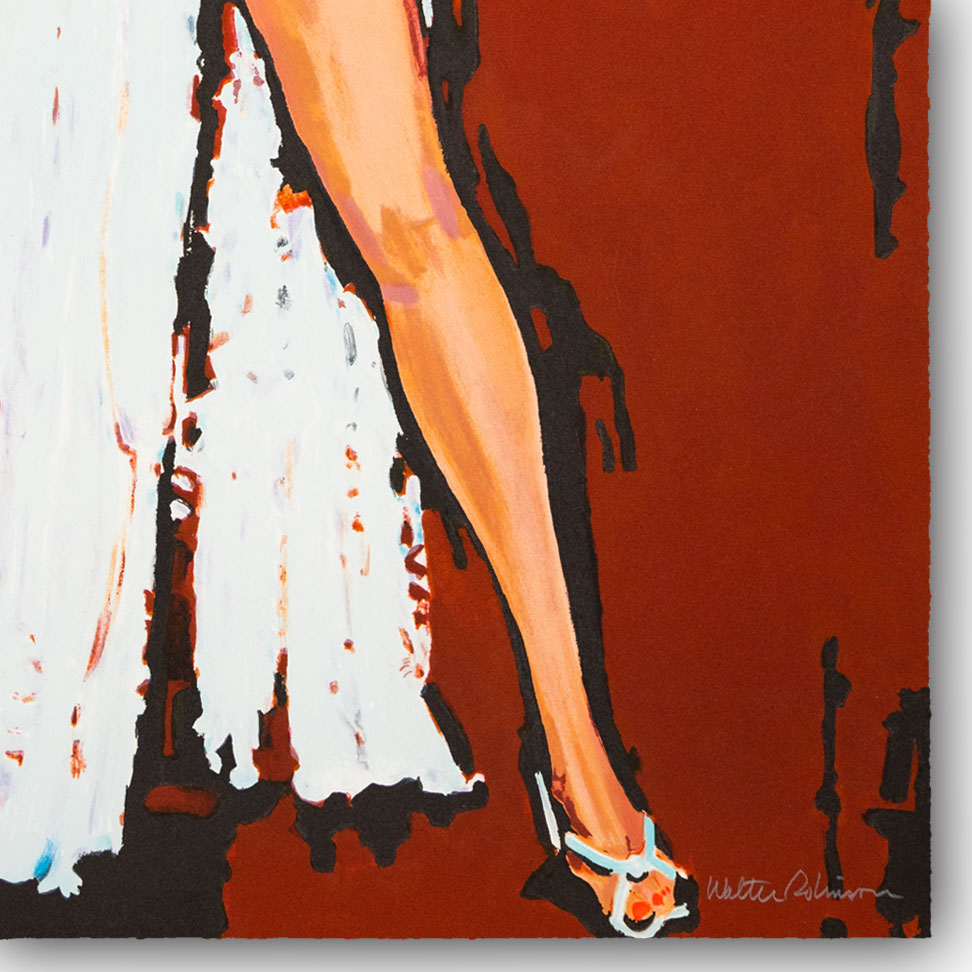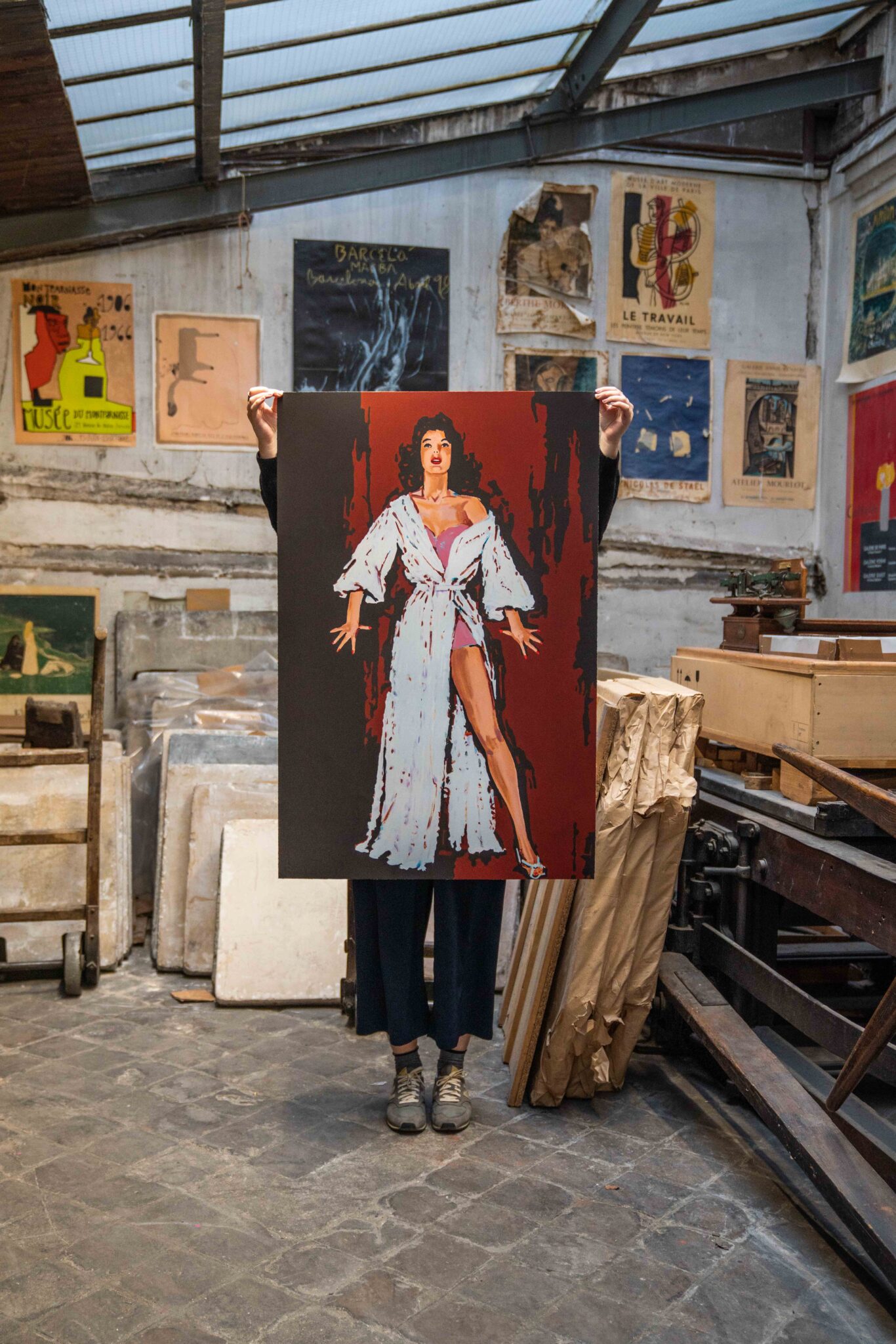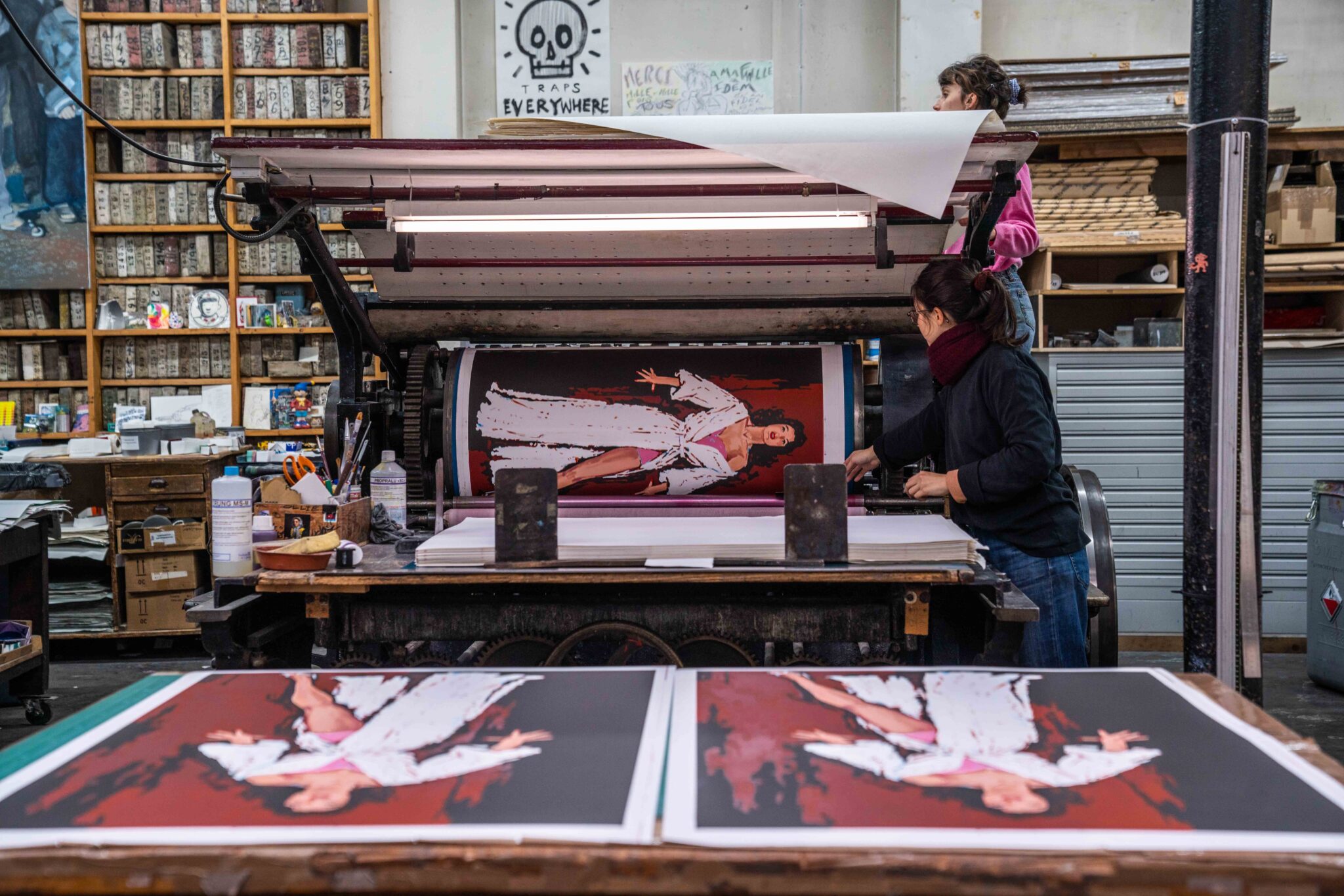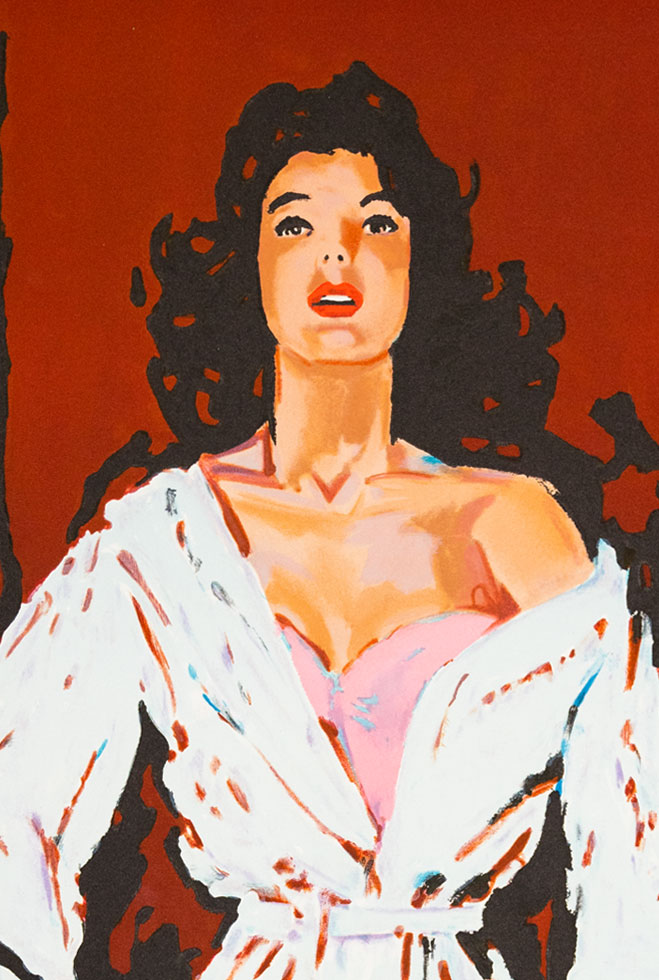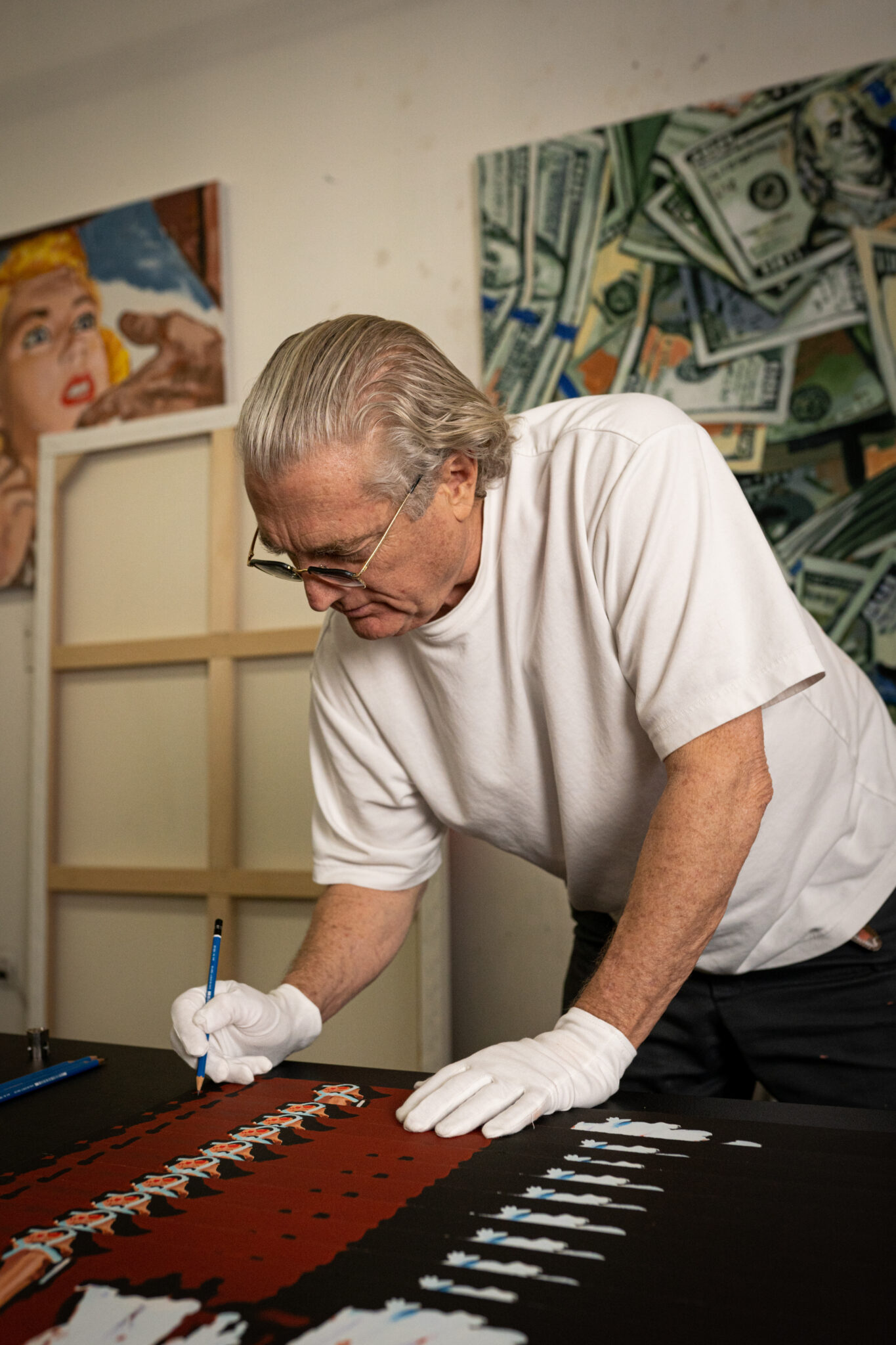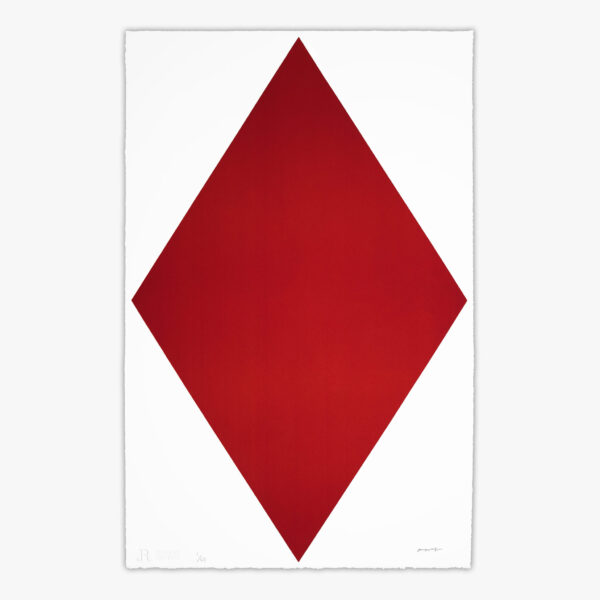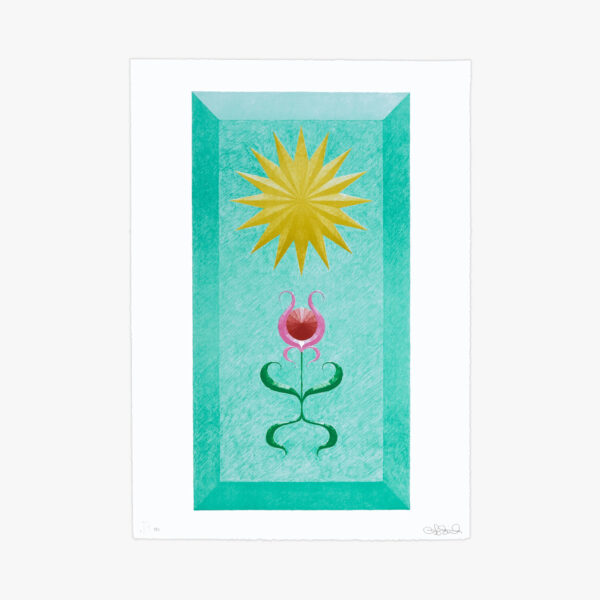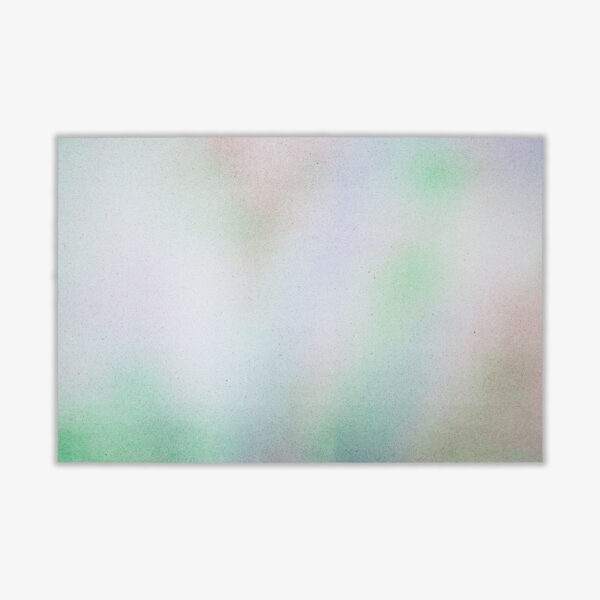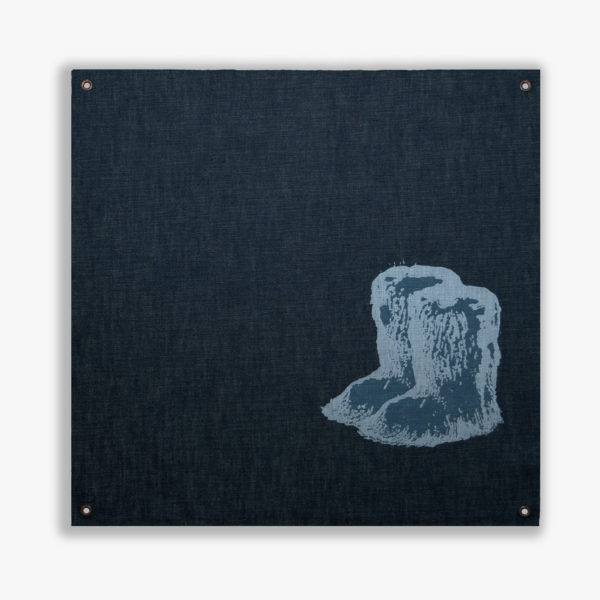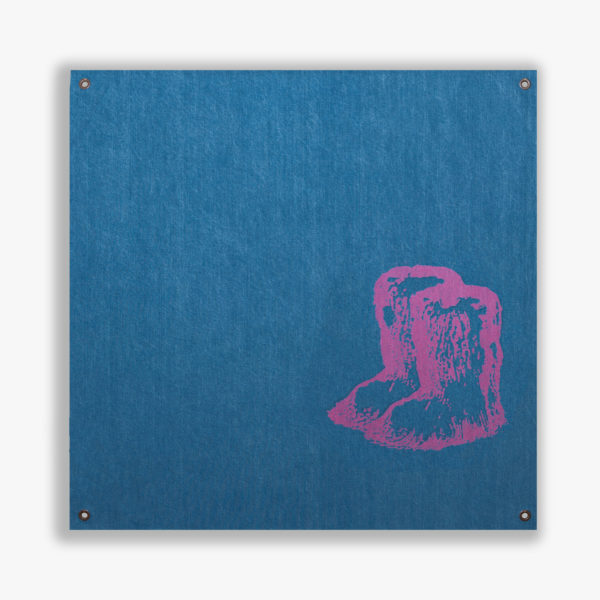“Death Turns the Tables” is the title of a 1941 detective story by John Dickson Carr, a classic – read old fashioned, even hackneyed – whodunnit where an imperious vigilante of a judge becomes the murder suspect. This about-face, this reversal of fortune, this return of the repressed is broadly speaking an elemental mechanism of intellectual discovery, in which the fresh and new dispenses with the old and tired.
For the avant-garde, upsetting conventions is the first step on a path towards freedom – figuratively speaking, that is, for it can only hope to strike terror in the hearts of unbelievers, as is suggested by this picture. A sinister Abstract Expressionist painting – a primitive design of ragged stripes of red and black, presumably inspired by Clyfford Still – serves as backdrop for a melodramatic scene, which presents a woman in a lacy white nightgown – must she be innocent? – standing shocked, panicked by whatever looms in front of her. No doubt the killer or a scene of his crime, this horrifying vision curiously occupies the same position as the viewer. We are the witness, we are the perpetrator. As we look at the picture, it turns the table and looks right back at us – and screams.
— Walter Robinson, NYC, 2022
